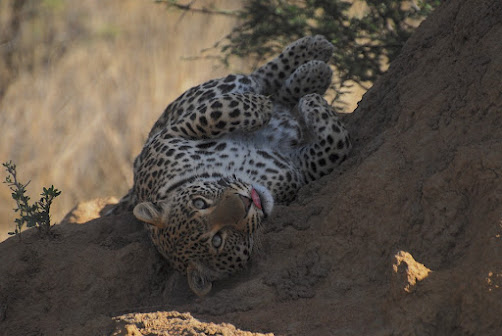The African leopard is one of the most beautiful and majestic animals in the world. But sadly, they are also one of the most endangered. In this blog post, we will explore how many African leopards are left in the world and what is being done to protect them. The African leopard is a subspecies of leopard that is native to Africa. They are the largest of all leopard subspecies and can weigh up to 200 pounds. African leopards are known for their beautiful spots, which are unique to each animal. Sadly, African leopards are critically endangered. It is estimated that there are only about 10,000-20,000 left in the wild. The main threats to their survival are habitat loss, trophy hunting, and conflict with humans.
The current status of the African leopard population
The African leopard is one of the big cats in the Panthera
genus, and its population is currently estimated at between 10,000 and 20,000
individuals. Most of these live in sub-Saharan Africa, with smaller populations
in North Africa and the Arabian Peninsula.
Leopards are listed as "vulnerable" on the International Union for Conservation of Nature's (IUCN) Red List of Threatened Species. Their numbers have been declining in recent years due to habitat loss and fragmentation as poaching for their skins. In some areas, such as West Africa, the leopard population has been reduced by up to 90% over the past century.
Conservation efforts are underway to help protect leopards and their habitats, but much more needs to be done if this magnificent animal is to be saved from extinction.
The primary threats to the African leopard population.
African leopards are one of the most endangered big cats in the world. Their populations have declined significantly over the past century due to a variety of threats, including habitat loss, degradation, and fragmentation; poaching; and conflict with humans.
Habitat loss and degradation is the biggest threat to African leopards. As human populations have grown and expanded into leopard territory, we have increasingly encroached on their habitats. This has led to habitat loss and fragmentation, which has made it difficult for leopards to find adequate places to live and hunt. In addition, as human activity has increased in leopard territory, there has been an increase in pollution and other forms of habitat degradation.
Poaching is another significant threat to African leopards. Leopards are killed for their skins, used to make clothing and other products. They are also killed for their bones, which are used in traditional Chinese medicine. In addition, some people believe that eating leopard meat will bring them good luck or make them more virile. As a result of these beliefs, there is a demand for leopard parts on the black market, which fuels the illegal trade in these products.
Conflict with humans is also a major threat to African leopards. As human populations have grown and expanded into leopard territory, there has been an increase in incidents of livestock predation by leopards. In response, many farmers have taken measures to protect their animals.
Conservation efforts for the African leopard.
The African leopard is one of the most popular animals in
the world, and there are many conservation efforts in place to protect them.
The International Union for Conservation of Nature (IUCN) lists the African
leopard as a "vulnerable" species, and it is estimated that there are
between 10,000 and 20,000 leopards left in the wild.
Many different organizations are working to protect the African leopard. The African Wildlife Foundation (AWF) is one of the leading organizations working to conserve leopards and other wildlife in Africa. The AWF works with local communities to promote coexistence with wildlife, runs education programs about the importance of conservation, and funds research on how to best protect these animals.
The Panthera Foundation is another organization working to protect leopards. Panthera works closely with governments and local communities to create effective conservation plans. They also fund research on leopard ecology and work to stop the illegal wildlife trade.
You can support these conservation efforts by donating to organizations like the African Wildlife Foundation or Panthera Foundation, or by supporting their partner organizations. You can also help by spreading awareness about the importance of protecting these magnificent animals.
How you can help conserve the African leopard
population.
There are many ways that you can help conserve the African
leopard population. One way is to support organizations that are working to
protect these animals. You can also help by spreading the word about the
importance of conserving this species.
Another way to help is to reduce your impact on the environment. This means reducing your consumption of products made from endangered animals, and choosing environmentally-friendly options whenever possible. Every little bit helps when it comes to saving this beautiful creature!
Conclusion.
The exact number of African leopards that are left in the
world is unknown, but estimates put the population at somewhere between 10,000
and 20,000. The main threats to the species are habitat loss and conflict with
humans, but thankfully there are many conservation efforts underway to try and
protect these beautiful animals. Let's hope that 2022 is a good year for
African leopards and that their numbers start to increase.



0 Comments